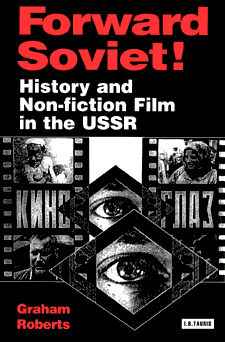In his book Making Meaning, David Bordwell makes distinctions
between journalistic, essayistic, and scholarly film criticism. According
to Bordwell, journalistic criticism consists of the reviews designed for a
general readership published in such daily and weekly periodicals as the
Chicago Sun-Times, Time and the Village Voice; essayistic criticism, in
contrast, appears in "specialized or intellectual monthlies or
quarterlies" (Cahiers du Cinema, Artforum, Film Comment) and is longer and
more in-depth than journalistic reviews. And then there's academic film
criticism: long, footnoted, peppered with jargon that limit its audience
to professors and would-be professors, and published in scholarly journals
like Cinema Journal, Screen and Camera Obscura.
To anyone familiar with film criticism, these distinctions are
yawningly obvious. Yet lately I've become a fan of writing that,
unconsciously or consciously, tears down the metaphoric fences among the
journalistic, essayistic and scholarly realms. My favorite journalistic
writers, J. Hoberman and Jonathan Rosenbaum, are a couple of eggheads who
bring academic ideas and high erudition to their movie reviews, and there
are plenty of books written for the masses that tell us more about the
movies than any 20 academic-press tomes. (One that instantly comes to mind
is Julie Salomon's The Devil's Candy.) Conversely, certain academics
entertain me because their writing is anecdotal and gossipy and
"unprofessional." B. Ruby Rich's recent Chick Flicks: Theories and
Memories of the Feminist Film Movement is a fascinating read, both for its
excellent articles on major directors (Chantal Akerman, Yvonne Rainer,
Sally Potter) and for its tidbits about people Rich doesn't like.
Perhaps the most idiosyncratic (and thus the most entertaining) academic
writer is Robin Wood, whose work I adore for both its superb close
readings and its long, strident digressions about revolutionary social
reform.
This confusion is particularly apparent in Roberts' insistence on
giving prose summaries of many of the films he discusses. In his
introduction, he explains the rationale behind what he calls the "lengthy
reportage of the films under investigation":
The fact that Roberts italicizes "to look at the pictures" suggests that
he is fed up with film history that leaves textual analysis behind and
flies off into overly-abstract assumptions about ideology, spectatorship,
etc. Perhaps Roberts got up on the wrong side of a stack of old issues of
Screen the morning he wrote that sentence, but it should be noted that the
best contemporary work on silent films---Charles Musser's The Emergence of
Cinema, Richard Abel's The Ciné Goes to Town, Lauren Rabinovitz's for the
Love of Pleasure---is scrupulous and intelligent in the ways it combines
close reading (and film summaries) with theoretical analysis. Roberts'
belief that his readers "will not---and cannot--see many of the films I
have discussed" also seems wrongheaded. Who does he imagine his readers to
be? Surely Forward Soviet! (currently available only as an expensive
hardcover) won't attract casual readers who think to themselves, "I will
now read a very detailed book about Soviet non-fiction film, but I
absolutely, positively will not see any of the movies the author
discusses."
I suspect that readers interested in Forward Soviet! have already
seen examples of 1920s Soviet non-fiction work, and I'd also bet that
these readers have watched these films on video. It's weird, then, that
Roberts feels the need to summarize films that he can safely assume that
his readership has seen. Roberts notes, for instance, that he can only
give Dziga Vertov's The Man with the Movie Camera (1929), a "cursory
analysis," but then he spends four pages unnecessarily summarizing much of
the action in this widely seen and highly regarded film. He likewise
summarizes a later Vertov work, Three Songs of Lenin (1934), but this film
is also readily available; it's on video (courtesy of the valiant folks at
Kino) and it has aired on Turner Classic
Movies. One of the great strengths of Roberts' book is the government
reports and primary statements by filmmakers he discovered in his
research. Roberts should devote more time to primary material like
this and abandon the goofy hope that his book might attract a general
reader who hasn't yet seen Man With the Movie Camera.
Another way that Roberts blurs the line between academic
scholarship and mass appeal is through the personal opinions he
periodically interjects into his analyses. He criticizes Vertov's
Enthusiasm (1931)--"The first half is a repetition of Cine-Eye tricks;
the second half is repetitive and becomes rather boring" (99)---and is
similarly harsh on Esfir Shub's Komsomol--Patron of Electrification
(1932; "a disappointing film but a fascinating historical document"
[104]). I find Roberts' evaluative judgments stimulating for two reasons.
First, most scholars try to remain "objective" about their object of
study, so it comes as a bracing little shock when Roberts describes a film
as "boring" or "repetitive." And second, Roberts usually gives good
reasons for the judgments he makes, as in his description of the chilling
historical context surrounding the images presented in Enthusiasm:
Roberts quite rightly defines Stalinism as both atrocity and farce here,
while expressing a disdain for "impossible fictions" that masquerade as
documentary. Curiously enough, though, his hatred of Stalin and
documentary lies leads to the biggest problem with Forward Soviet!: its
marginalization of the Socialist Realist documentaries made from the mid
'30s to the mid '80s. The subtitle of Forward Soviet! promises a survey
of "History and Non-Fiction Film in the Ussr," but the book focuses almost
exclusively on the experimental work of the '20s and early '30s. Chapter
7, "The Not So Strange Death of Soviet Documentary," charts the careers of
Vertov and Shub as they plummeted out of Stalinist favor, and Roberts
discusses other '30s Soviet filmmakers only when relevant to the
Vertov-Shub tragedies (or relevant to the making of WWII documentaries).
But I can't help but think that Forward Soviet! might be more fun and
valuable if Roberts had told us more about Yakov Bliokh, Vladimir Erofeev,
Roman Karmen, and other directors unknown in the West.
Chapter 8, "By Way of Conclusion," creates an even more profound
gap in Roberts' survey of Soviet non-fiction film, The chapter begins by
describing the documentary film production possible in post-war Stalinist
Russia:
This description is followed by a chronicle of what happened to the '20s
and '30s filmmakers after WWII that reminded me of movies that use
captions and voice-over narration to tell us characters' futures. At the
end of Animal House (1978) a caption tells us that Bluto will become a
U.S. senator; in Roberts' final chapter, we find out that "[Shub's]
involvement in film making ended in 1953. She contented herself in her
final years with writing her memoirs" (141) and "[Medvedkin] remained a
committed communist until his death in 1989" (141). After these updates,
Roberts finishes his book by discussing what he calls a "renaissance" in
documentary production during Glasnost and Perestroika.
Absent from Forward Soviet!, then, is any serious consideration of
the non-fiction films made in Russia between 1945 and 1985. Roberts'
hatred of Stalin and deceptive documentaries, in other words, leads him to
ignore 40 years of film production, and this is a gap that undermines the
usefulness and narrows the scope of Forward Soviet! I can understand why
Roberts dislikes post-war Russian documentaries, but he has an obligation
to engage with these films in ways beyond almost total dismissal.
(Consider as an alternative J. Hoberman's The Red Atlantis: Communist
Culture in the Absence of Communism, which thoughtfully reads Soviet
socialist realist art as symptoms of Russian culture and international
geopolitics.) I appreciate how Roberts isn't afraid to call a Shub film
"disappointing" or "boring," but he crossed the lines between personal
taste and academic research too much when he decided, "Ah, I don't like
those Stalinist propaganda flicks, so I just won't write about 'em."
Forward Soviet! would be a much stronger book if, at that moment, Roberts
the scholar had ignored his own opinions, and dutifully taken on the
responsibility to give us a comprehensive book on Soviet non-fiction film.
Forward Soviet!: History and Non-fiction Film in the USSR by Graham
Roberts is currently available in hardcover from I.B. Tauris. 195 pages. Suggested list price: $59.50.
|


 Transgressing the lines between journalism, opinion and
scholarship, however, isn't always enlightening or entertaining.
Sometimes it just creates confusion, as in Graham Roberts' new book
Forward Soviet!: History and Non-Fiction Film In The USSR (I.B. Tauris,
1999). On the surface, and in much of its content, Forward Soviet! is a
level-headed survey of what the Soviets called "unplayed" film (with
special emphasis on the careers of Dziga Vertov and Esfir Shub), but in
various strange ways Roberts fiddles with the distinctions between opinion
and scholarship as extensively as Rich or Wood. True, Roberts doesn't
gossip about Alexander Medvedkin's monkey lust or present his own version
of sexual utopia, but he does combine wildly disparate
approaches--impressionistic opinions, long (and in many cases
unnecessary) synopses of key Soviet documentaries, and scrupulous
research from Soviet archives--into a book that can't decide if its
target audience is Joe and Alice Sixpack or, more narrowly, academics who
study Soviet cinema.
Transgressing the lines between journalism, opinion and
scholarship, however, isn't always enlightening or entertaining.
Sometimes it just creates confusion, as in Graham Roberts' new book
Forward Soviet!: History and Non-Fiction Film In The USSR (I.B. Tauris,
1999). On the surface, and in much of its content, Forward Soviet! is a
level-headed survey of what the Soviets called "unplayed" film (with
special emphasis on the careers of Dziga Vertov and Esfir Shub), but in
various strange ways Roberts fiddles with the distinctions between opinion
and scholarship as extensively as Rich or Wood. True, Roberts doesn't
gossip about Alexander Medvedkin's monkey lust or present his own version
of sexual utopia, but he does combine wildly disparate
approaches--impressionistic opinions, long (and in many cases
unnecessary) synopses of key Soviet documentaries, and scrupulous
research from Soviet archives--into a book that can't decide if its
target audience is Joe and Alice Sixpack or, more narrowly, academics who
study Soviet cinema.